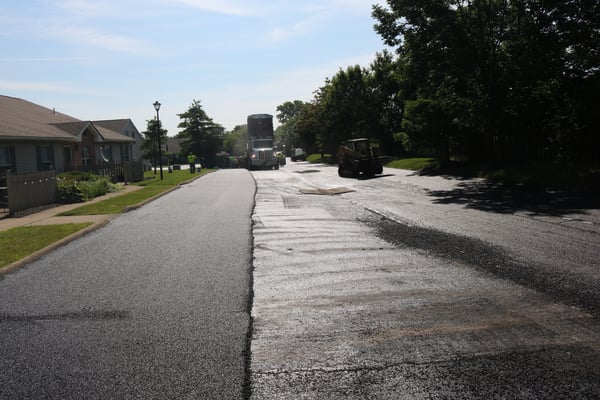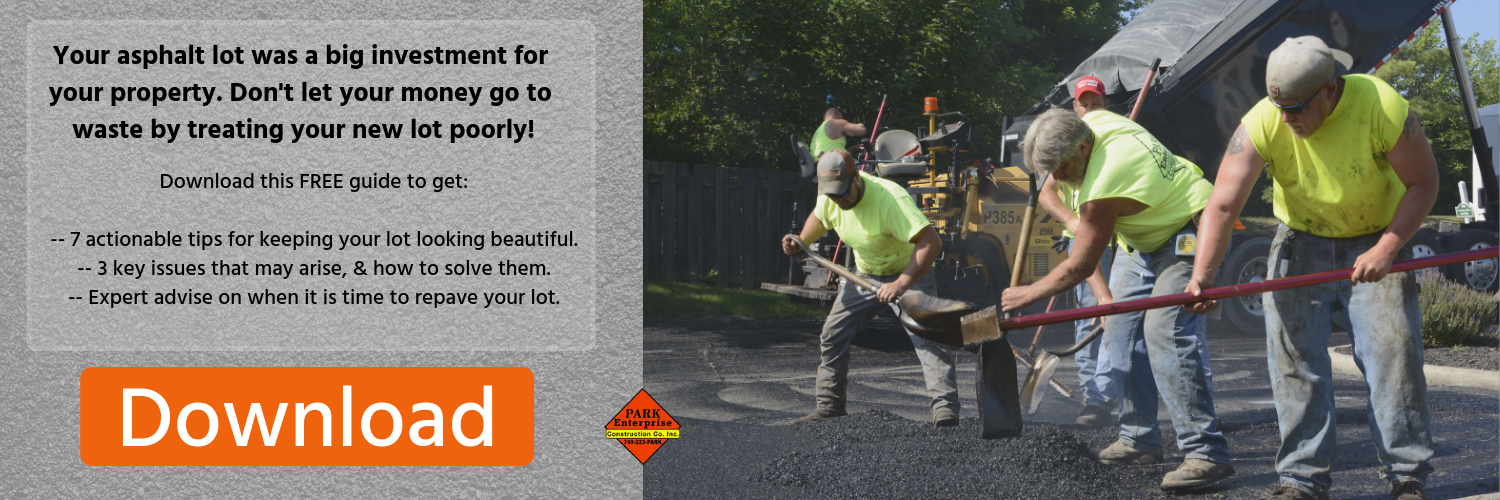
Whether you're a business owner, property manager, or civil engineer you'll likely have to replace an asphalt surface at some point; whether that surface is a road, parking lot, or recreational site.
Asphalt resurfacing produces a final product that will last a while -- sometimes upwards of 20 years. It’s important to choose a contractor who you trust to do a good job, since this asphalt will represent your property for a long time.
The Steps to Installation (+ Why You Should Care About Them)
While asphalt resurfacing or installing is a fairly straightforward process, anyone who needs to have it done should ideally have a good understanding of what is involved so they're better able to gauge contractor credibility and job progression.
This post will take a look at the steps involved in asphalt resurfacing, from the initial price quote to the finished product.
Step 1: The Asphalt Lot Installation Quote
The asphalt installation process all starts with hiring a contractor to perform the work. Do you research online and find a contractor who has a good reputation in your area.
Make sure that the contractor you hire is credible, ethical, experienced, and follows the steps listed below.
Remember: Cheaper almost never means better. It’s important to choose a contractor whose work will be durable and long lasting. It is almost always worth it to pay a little bit more up front for a contractor who will go the extra mile, rather than pay frequently down the line for asphalt repair.
Step 2: Demolition and Removal
After a bid is accepted, it's time to get to work. Asphalt resurfacing starts with the demolition and removal of the current surface. This involves the use of heavy-duty equipment, such as jackhammers, demolition hammers and other industrial equipment on larger jobs.
The process is noisy and dusty, but an essential step in the resurfacing job.
If you’re a property manager, ask your contractor when they estimate this step will take place. That way, you can notify your residents and tenants ahead of time, and eliminate any calls of complaint.
Step 3: Grading and Subgrade Compaction
Before any asphalt can be put down, the ground has to be properly graded and the subgrade compact. This step is important to ensure the pavement drains properly. This typically consists of building mounds to fill in any low spots.
Following grading, a drum roller is brought in to compact the soil. For larger resurfacing jobs, a proof roll test must be completed. This is typically done with a fully loaded dump truck, and tests the integrity of the rock before the lot is laid.
Step 4: Lay Crushed Rock
The next step before putting down fresh asphalt is laying down crushed rock. Crushed rock helps with drainage and also provides a sturdy base for the asphalt to be placed on.
After putting down the crushed rock, it's always best to let it sit and settle for a certain period of time. Allowing the crushed rock to settle helps it form a sturdier, more reliable base.
The aggregate sub-base needs to be compacted. This can often be done with water, and with machines and technology to reach the perfect range of compaction for optimum performance.
Following laying crushed rock, some jobs may also include putting down a binder and a surface course as a base.
Step 5: Lay the Asphalt
Finally, putting down the asphalt is the last step. When you sought an estimate ideally, you should have already determined the size and thickness of the asphalt that will be applied, as every application is different.
For instance, smaller aggregate is usually used for parking lots, while larger, thicker aggregate is used for roads. Once put down, it should be compacted with a roller (or roller truck on large jobs) to create a smooth, uniform surface. The edges should be formed at a 45 degree angle.
Joints and transitions are also made during this last step so the new surface blends in seamlessly with other surfaces.
Find an Asphalt Contractor You Trust
Installing your asphalt lot properly is an important job for the aesthetics of your property, and can have implications on your business as a whole.
Make sure to choose a contractor who will follow all of the above steps, keep you informed throughout, and complete a project that is worthy of sticking with your property for decades to come.
Want to keep your asphalt looking brand new long after it is installed?
Learn maintenance tips that will help keep your lot looking better, longer:




